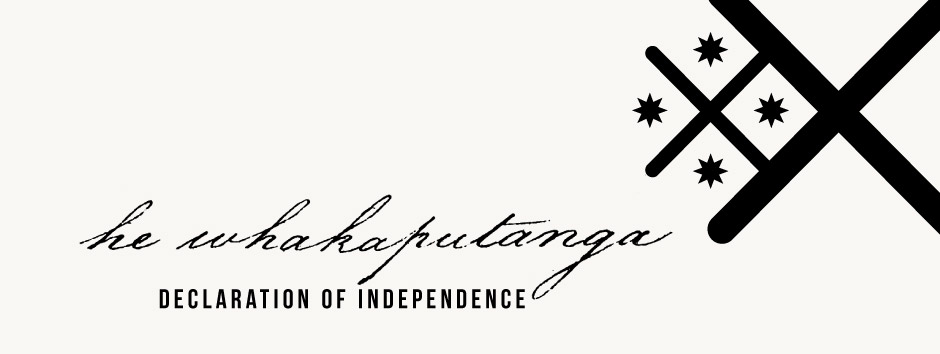Signing details
Te Tirarau Kūkupa, a prominent leader based around the upper Wairoa River, was described by trader Joel Polack in the 1820s as a 'tall commanding figure, apparently about thirty-five years of age, with a countenance at once very expressive, features possessing European regularity, and a complexion of light bronze. He was marked entirely with the moko, or tattoo.' [1] He was the son of Kūkupa and his first wife, Whitiao, and was born around the late 1790s. Te Tirarau belonged to Ngāi Tāhuhu and Te Uri Roroi, and was a leader of Te Parawhau of Whangārei. He was also related by marriage to Te Uri-o-Hau, which had links with Ngāti Whātua.
Keen on the advantages of trade with Europeans, Te Tirarau had numerous cultivations, and his settlement at Te Aotahi impressed visitors with its large, decorated dwellings. Missionary Samuel Marsden said the dwelling at Tangiterōria was the best he had seen in New Zealand. It had a portico at the front that was 16 feet (almost 5 metres) wide, while Te Aotahi pā was fortified with timber 24 to 30 feet (7 to 9 metres) high. Although Te Tirarau was a patron of the mission stations at Tangiterōria, he only converted to Christianity on his deathbed.
Te Tirarau signed He Whakaputanga on 9 February 1836, and in May 1840 signed Te Tiriti o Waitangi alongside Te Ruki Kawiti. He was later involved in numerous disputes with both Māori and Pākehā over land and access to resources such as timber, sometimes leading to armed conflict. Te Tirarau remained a staunch defender of his people’s rights into his old age.
He died in December 1882 and was succeeded by his brother Taurau Kūkupa.
[1] Joel S. Polack, New Zealand: Being a Narrative of Travels and Adventures During a Residence in That Country Between the Years 1831 and 1837, Richard Bentley, New Burlington, London, 1838, vol.1, p.171.
